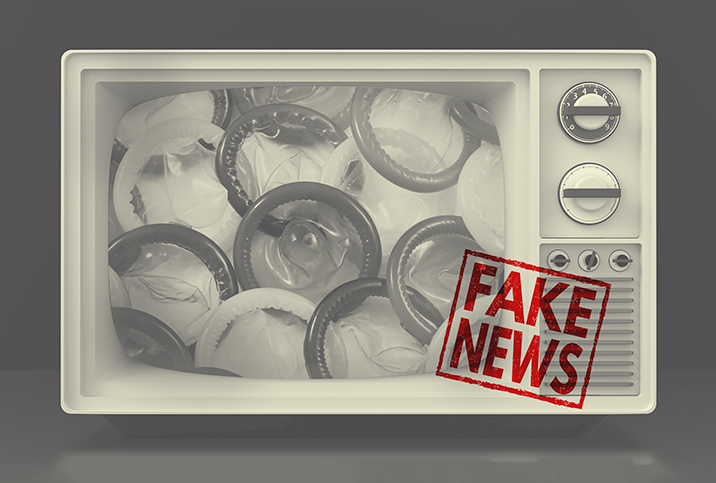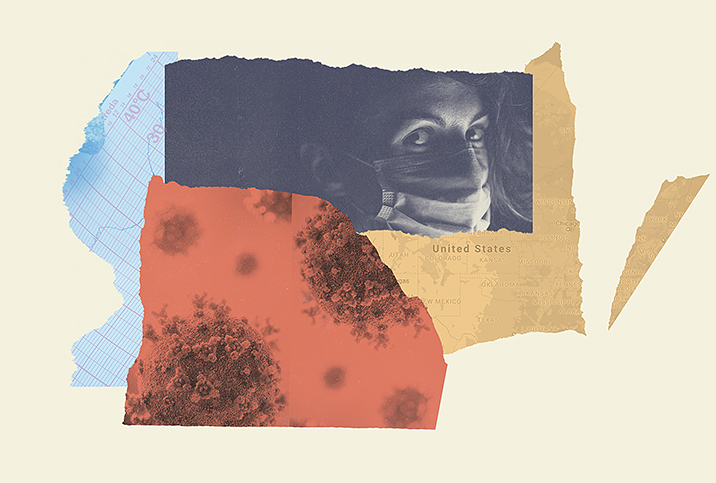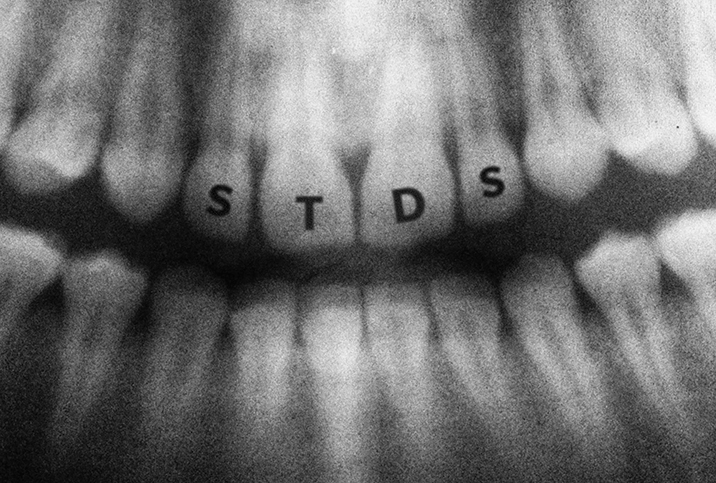Please Stop Believing These STI/STD Inaccuracies

Someone contracts a sexually transmitted infection (STI), develops a sexually transmitted disease (STD), seeks medical aid and successfully treats the condition. Being infection-free, they figure transmission of the STI isn't possible, so they have sex again. Inadvertently, this person gives their partner more than a good time. Unbeknownst to both until later, the person passed on an STI.
Even now, knowing as much as we do about STIs and how they are transmitted, people still make terrible assumptions, which can be detrimental to their health and the health of others.
Let's clear up several inaccurate beliefs, beginning with how to refer to the condition. Is it STI or STD? While the acronyms are often used interchangeably, there is a distinct difference, said Rachel Wingard, a spokesperson for the Centers for Disease Control and Prevention (CDC).
"Technically speaking, as indicated by their names, STD refers to the situation where an infection transmitted through sexual activity has caused a problem [e.g., a 'disease'], while STI refers to the infections themselves, which may or may not have already caused disease," Wingard said.
Inaccuracy #1
No active infection means no chance of transmission to others
People who have contracted an STI often assume that not having an active infection means it's impossible to transmit anything to a sexual partner, said Francisco Marco Canosa, M.D., an infectious disease specialist at the Cleveland Clinic's Avon Hospital in Avon, Ohio.
"When the virus is active, when you're having symptoms, your chances of transmitting this infection to others is very high," Marco Canosa said, adding that when the virus isn't actively causing an infection or a disease, the risk of transmission is not zero, but is relatively low.
Still, once you're exposed to a sexually transmitted virus, you're almost always going to continue to harbor it, which means you could give it to another person during unprotected sex, he said.
Inaccuracy #2
If I have no symptoms, I can't have an STI
People sometimes conclude because they are symptom-free, they're infection-free.
"The whole purpose of screening is exactly that, because we know people may have a sexually transmitted infection but not have symptoms," Marco Canosa said.
He said specific STIs/STDs, such as gonorrhea, can appear entirely asymptomatic in the rectal or pharyngeal areas.
In the same vein, Wingard noted not everyone knows gonorrhea, syphilis and chlamydia can be spread through anal or oral sex, in addition to transmission via vaginal intercourse. Additionally, having such an infection once does not protect against future infections.
"Even if you and your partner took medicine, you should be retested in three months," Wingard said about gonorrhea and chlamydia, adding the CDC has a list of STD tests recommended for different individuals.
"Getting tested is the only way to know for sure if you have an STD," she emphasized. "Many STDs don't cause any symptoms, so you could have one and not know. If you're having sex, getting tested is one of the most important things you can do to protect your health."
Even if someone has no symptoms, it's important to talk to a doctor about getting tested. As Wingard noted, leaving certain STDs untreated can increase a person's risk for developing an HIV infection, pregnancy complications, infertility, pelvic pain and pelvic inflammatory disease (PID), among other issues.
Inaccuracy #3
A positive test result is absolutely accurate
In the age of immediately accessible test results on online platforms and healthcare apps, people often jump to conclusions or misinterpret information before a doctor has the chance to explain what the bloodwork or lab results mean.
Diagnoses are not always straightforward, as Marco Canosa made clear. For instance, with sexually acquired pelvic inflammatory disease, a condition that can affect a woman's reproductive health, there is no single test that offers a definitive diagnosis the way a test can reveal a person has HIV. A combination of tests and signs is needed to diagnose PID, and the fact a person tests positive for something does not necessarily mean they have it. A patient's healthcare provider must put the pieces together and determine whether that's the case, Marco Canosa said.
As far as false positives from STI/STD tests, he said they are possible but relatively rare. For example, medical providers typically test for herpes, a common STD that causes cold sores and genital ulcers, by swabbing the ulcers or sending samples for molecular detection to look for the presence of pieces of the genes of the virus. Sometimes providers perform a blood test that checks for an antibody, which can reveal past exposure to the virus but does not indicate the virus is active at the time of testing. An out-of-context positive result can produce unnecessary anxiety and confusion for patients, which is why providers need to follow screening and testing guidelines, Marco Canosa said.
Syphilis presents a similar possibility. An initial test that checks for an antibody can show whether a person's immune system has been exposed to the germane bacteria. A positive result indicates the immune system's memory response to an infection that someone might have already sought treatment for—it doesn't mean the person is facing a new infection. This is why doctors order a second test to assess how much disease activity is taking place. It is also why, as Marco Canosa stressed, an experienced professional should be interpreting results.
"We do perform confirmatory tests after we have a positive result to make sure that we are giving the patient the right diagnosis," he said. "So patients can rest [assured] that if they are being told that they have an infection, they do have an infection."
Inaccuracy #4
Estimating my risk for STIs/STDs is easy
A person with one sexual partner might believe they're not at risk for STIs/STDs. Marco Canosa pointed out, however, that if partners aren't sure they're in a monogamous sexual relationship, they could be exposed to something their partner acquires through a sexual encounter with someone else.
If you're sexually active, it's essential to get checked regularly, regardless of how many partners you have.
Inaccuracy #5
A negative test equals everlasting immunity
So you tested negative. That's a relief. But it's not a green light to have carefree sex going forward with the wrongheaded belief that you can't possibly contract or spread an STI.
Each subsequent sexual encounter represents another possible exposure.
"You might [have been] disease-free or symptom-free or infection-free last week, but this week, after a busy weekend, the story might be different, and that's why it's important to get [screened regularly] if you have high-risk sexual behaviors," Marco Canosa said.
Inaccuracy #6
I've been tested, so my partner doesn't need to be tested
If you get tested and treated for STIs/STDs, you might assume your partner need not worry. Wrong. Marco Canosa said "partner services" are often needed to break the unwanted cycle of spread. You might receive effective treatment, but if your partner needs treatment and doesn't get it, you can be reexposed and infected once again when you have sex with them.
Marco Canosa said some states allow emergency treatment for people when their sexual partner has been diagnosed and treated for an STI/STD. Other states require everyone to get tested prior to treatment.
Inaccuracy #7
STI/STD testing is arduous and costly, and treatments are iffy
Lacking up-to-date knowledge about STI/STD testing, someone might assume the process is expensive and onerous or that it takes a long time to receive results. Yet many publicly funded clinics and services make testing available at no cost, and the tests have come a long way in efficiency.
"Way back in time, we used to do culture methods to diagnose some of these diseases, and those take time and they're challenging to do and they're inconvenient, because you have to swab places and things like that for patients," Marco Canosa said. "Right now, our methods are based on nuclear amplification and basically molecular-based methods, which are very sensitive. They come back very fast."
The newer nucleic acid amplification tests identify genetic material from bacteria contained in samples and make doctors' lives easier, in his estimation.
Wingard said patients who test positive for a sexually transmitted infection or disease should work with their providers to get proper treatment.
"Some STDs can be cured with the right medicine, and all STDs are treatable," she explained.
You can help ensure the efficacy of treatment by taking medicine as prescribed—yes, even if you begin to feel better or symptoms subside—and by avoiding sex until you and your partner have completed treatment.




















